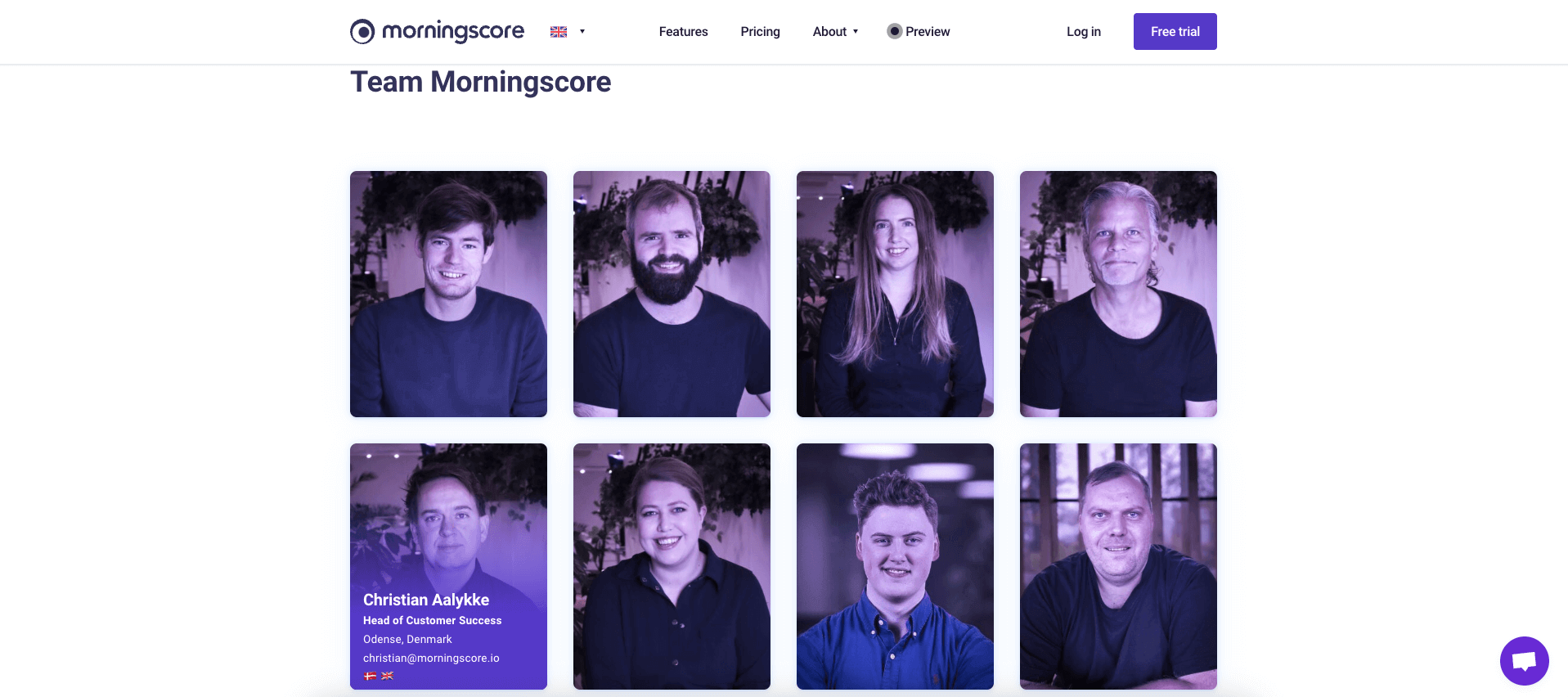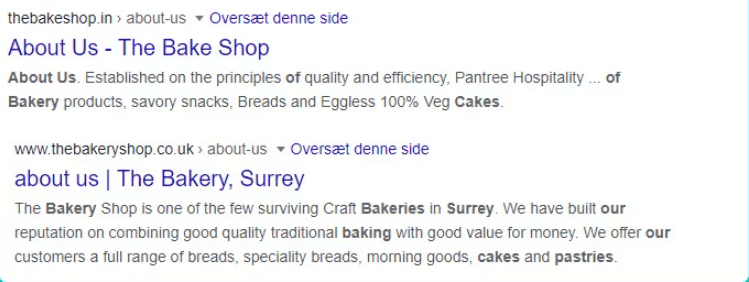Generally speaking, there are 3 essential pages every website should have and nurture.
- Home page
- Contact page
- About us page
About us is often one of the most visited page on a website and can boost conversion rates.
So, let’s dive deeper into what you can do to optimize your About page for SEO and get the most out of it.
What is the purpose of an About page?
The About page is your chance to show who you are, what you stand for, and what makes you unique. This is the page where visitors can get more information on a company’s history, values, and people.
What should be included in an About page? Which content to be made
If you want to build a perfect About us page, you should pay attention to the following elements:
- content
- keywords
- NAP
- title tag and meta description
- internal links and CTAs
- and schema
The About us page is a widely neglected part of a website. Mostly because website owners are unsure of what to include there. Set up these elements properly and your visitors (and search engines) shouldn’t have a problem understanding the essence of your company.
Here’s how.
1. Content: Ideas to help you avoid thin content
Google loves rich, content-filled pages. But not everyone has the time, desire, or aptitude for content writing. Even fewer have a good understanding of how much content should be included and what information belongs here.
Let us give you a hand.
How long should an About us page be?
An about us page should ideally be between 300-500 words.
How did we come to this number you ask? Well, anything below 200 words is considered thin content. 500-600 words is what most blog posts go for lately, and content that contains 2000+ words is considered cornerstone content that about pages doesn’t fit into. So, as long as you stay above the thin content mark and aim toward 500 words, you should be fine.
That said, most website owners have a hard time even reaching 200 words, which is why we are here to give you some ideas to help you fill out your About us page with content that will not only help you rank but also bring your brand closer to your partners and clients (both potential and current).
About us page content: What should I write on About us page?
Any relevant information to the company can be included on your About us page.
Remember, here the goal is not to sell, but to inform and spread brand awareness. Show a bit of the backstage and let your values speak for themselves.
Here’s a list of what you should consider writing about on your About page (and a few extra things to add):
- Unique value proposition – What makes you different from your competition? Which customer pains and needs do you solve? What makes your brand special?

- History – How did your business start? How long has it been present on the market?

- Mission, vision, value – Does your organization have a clear vision of where it is headed? What are your company’s core values?
- Culture – How do you expect your employees to behave? What do you do to ensure a good work environment?

- Career and job opportunities – What should a potential employee do to start a carrier at your company? Do you offer any benefits?
- Corporate social responsibility – What is your relationship to the local community? Is your company supporting a good cause?
- Elements of social proof – How do your customers and public perceive your company? Include, mention, or link to testimonials, case studies, reviews, partners (partner logos), media publications, awards, etc.

- Team – Who are your employees? Can they be contacted individually? Do you have a team picture?

- Images – Include images of your products, your team, your office space, your production line, etc
- Video – present yourself and your brand, your values, and the effect of your services and products on your customers and/or community. Videos are a good storytelling medium and a good way to get your visitors emotionally invested in your company
This should give you plenty of ideas to make a content-rich About us page.
Now, content-rich does not equal a wall of text. Keep each section short to hold interest – avoid writing long stories which are unlikely to be read. Build your story with short sections of text that interchange with images and videos. A good layout is key when it comes to increasing user-friendliness and retention. If you want to learn more about what thin content is and how to avoid writing it, read our blog post What is thin content in SEO.
2. Keywords: What should my About page rank on?
In most cases, the About us page is not meant to act as a landing page. For this same reason, you would not choose very specific keywords to rank for. Brand name, product, and service keywords should have their specific landing pages to rank with.
This however does not mean that you can drop keywords altogether. The About us page acts as a supporting page for the rest of your site, meaning that you should use your main keywords from other landing pages (but on a much smaller scale) in a long tail form to improve your local SEO.
You can find more tips and tricks in our Long tail research guide article.
3. NAP: Do I need to include contact info on my About page?
You probably have a contact page, right? So why would you bother including your contact info in About us?
Well, one of the reasons is that it helps boost your local SEO and the second is that it just makes for a better user experience.
The user is interested to learn more about your company, so including the Name, Address, and Phone number is just a logical thing to do.
Now, how to do it is a different thing.
Of course, you can display the info in a similar way as you do on your contact page. But you can also just include the information in the company description, create CTAs (“Call us” or “Contact us”) or simply make sure that it is available in the footer.
4. Meta description and title tag: Are the Meta tags important for About us? Can’t I just leave it empty?
Many companies don’t bother filling out the title tag and meta description for their About us page. But they are just important as on any other landing page so leaving them empty is not the best idea if you want a chance at increasing organic traffic.
Here’s an example:

If you were looking for a bakery, which SERP would you click on? The first one that Google autogenerated or the descriptive, keyword-rich one that tells you all you need to know in one neat package?
I think it’s pretty clear.
5. Internal links and CTAs: Divert the traffic to the web pages of your choice
You should always have a clear plan for each of your web pages. What do you expect the user to do here? And after they are done, what is their next step?
If you do not help them with the next step, chances might be that they will simply click away and leave your website.
Intelligently placed internal links and CTAs can help you divert newly arrived users to product and service pages or they can prolong the stay of a user that entered through another landing page and help them to the contact page.
In any case, these are both important for increasing user engagement and conversions.
6. Schema: Which schema is the most appropriate one for an About us page?
Schema is a type of microdata that makes it easier for search engines to interpret data.
Most businesses will have local schema on their front page and service pages. There are other types that are used supplementally to give more information on your products, display review rates, or provide richer results in the SERPS.
However, one type of schema that fits the About us page is the organization schema.
Ideally, this schema should only be used once. Whether you use it on your Contact or About us page is up to you.
After putting this guide in use, you definitely shouldn’t be in any danger of thin content on your About us page.
Don’t forget to take a peek at our Contact page SEO guide also.

